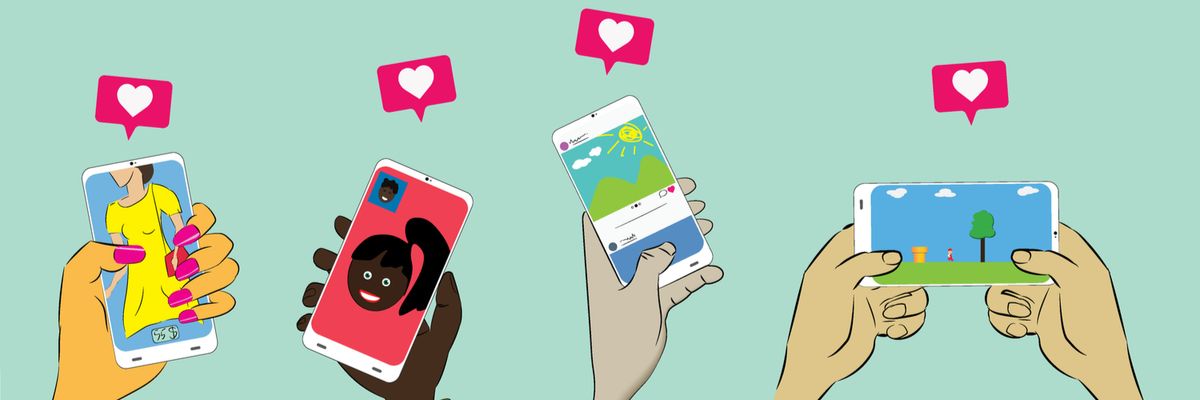After spending over two decades in marketing, I’ve noticed the high-level methodology and goals in the industry haven’t changed. The work continues to require a sharp eye for trends in order to drive cultural relevance; great creative minds to ensure high-quality content and a strategic distribution strategy to make sure that content reaches the right audience. But executing on these tenets has become increasingly difficult.
Today, there are more distribution channels and content formats than ever, and pinning customers down through any one channel has become a mission near impossible. Ad avoidance is also at an all-time high, with the use of ad blockers on a slow but steady rise. “Best practices” seem like they’re endlessly shifting and because of all these factors, brands are struggling to maintain an audience.
Enter influencer marketing
Influencer marketing offers brands the opportunity to remain relevant, produce high-quality content, and connect with targeted, loyal audiences. Today’s content creators are experts on the intricacies of cultural trends, their audiences, and the inner workings of social platforms. Influencer marketing grants brands that direct access to audiences by way of a creator’s relationships with their audiences. And audiences respond incredibly well to influencer marketing. For example, according to a blog post from Twitter itself, 40% of Twitter users said they’ve made a purchase based on an influencer’s tweet.
While it may appear to have become standard practice, influencer marketing is still relatively in its infancy, and like anything in its early stages, the space is rapidly changing. One critical difference in approach between successful influencer marketing today vs. even five years ago: creative control is shifting. Brands must understand that they need to adapt and collaborate with creators, as opposed to (brands) controlling the creative process entirely. Marketers must become more open to empowering creators and allowing them to do what they do best: make great content that’s custom-tailored to resonate with their audiences, all while employing the best practices of their preferred platforms. Brands and creators share the same goal – they both want to provide the best experience for their audience. Right now, both parties are in the early stages of figuring out how to work together to accomplish their common goal. But the best is yet to come.
The great frontier of influencer marketing
Influencer marketing is in a phase of hyper-growth and evolution. In 2021, the industry raked in an estimated $13.8 billion versus $1.7 billion in 2016.
With this, the power dynamics and business model of influencer marketing are changing. More influencers are becoming bonafide celebrities and business owners, racking up brand partnerships and massive, measurable followings. For example, Charli D’Amelio has a Dunkin’ endorsement deal, MrBeast launched his own restaurant chain, and Ninja signed a multi-year, multi-million dollar deal to return to Twitch after previously leaving for another platform. Or take Lil Nas X, who used social media to become one the world’s biggest pop stars and since then is known as both a musical artist and an influencer. Marketers have taken notice and are placing more importance on understanding how to navigate and find value in activating influencers for their brands.
But it’s not just with content creators that we’re seeing a shift. As social media platforms become the preferred form of commerce for Gen Z, who are starting to make up a significant portion of buying power, the number of creators to work with is growing exponentially. Through the use of AI, brands can build scalable campaigns that employ a diverse range of creators. Working with either micro or macro-influencers, or employing a strategy that includes both, opens up doors for cultural relevance that is too attractive to pass up.
Looking ahead
The innovation in influencer marketing certainly isn’t slowing down any time soon, and with emerging technologies being incorporated into daily social media use, I expect further developments in some key areas. For example, shoppable content and live-streaming will explode as the link between discovery and purchase grows tighter. We will also likely see live-streaming develop its own means of shoppable content opportunities, providing consumers the ability to see products their favorite streamers use and purchase them seamlessly.
Automation and artificial intelligence will also play major roles in helping brands strategise and execute their influencer marketing initiatives. With automation technologies, brands will be able to scale up their reach to work with millions of social creators a month. AI, and in particular, machine learning, can be used to analyse swaths of data at record speed, filtering out the noise and presenting the best influencer for brands to pair with. This, in theory, could be done with humans, but in practice, it would take years. And as the use of AI technology becomes more commonplace in helping brands discover creators and stay on top of the trends, it will further grant brands the ability to create impactful campaigns across platforms, allow them to make more informed decisions about which creators to partner with, and better understand the potential outcomes of these collaborations.
The opportunity to create new and exciting cultural moments that consumers remember, as well as empower the next generation of artists, shouldn’t be ignored by brands. By collaborating with creators, using AI technology to stay on top of new developments, and understanding the power of influencer marketing, brands and marketers will move past the advertising strategies of old that are no longer effective. We’ll see brand and creator partnerships and creative activations become the norm — and from there, the sky’s the limit.








